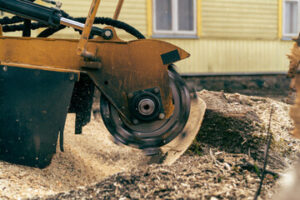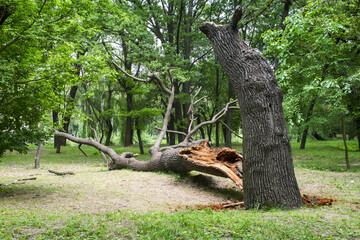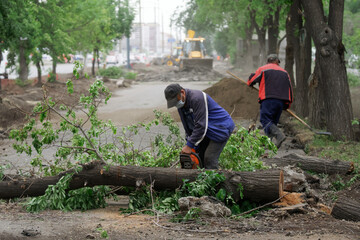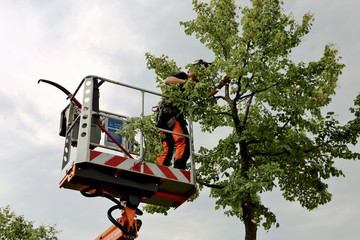Stump Grinding Vs. Stump Grubbing
Stump and tree grinding are two common methods for removing trees. The two procedures vary in cost and efficacy, so it’s important to choose the best one for your situation. You can learn more about both methods in this article. Read on to discover why stump grinding is better than stump grubbing and which is best for your situation. Talk to PRV Tree Service for a brief explanation of each. Listed below are the benefits of each.

Stump Grinding
If you are in the market for tree removal services, you’ve probably encountered the question of stump grinding. Although this method is cheaper, you need to be aware of certain hazards when doing it yourself. One of these is the risk of accidentally hitting a wire or power line while grinding the stump. Furthermore, grinding a stump that is too close to a structure or other plants can cause damage to the structure or the nearby plants. As a result, you’ll want to get the help of a professional arborist to properly remove the tree stump and ensure there are no hidden liabilities.
During this process, the roots of the tree are left behind. In many cases, these roots will take up extra space and are acidic, preventing the sprouting of new trees. In addition, you will never be able to plant another tree in the place where the tree stump was previously. And even if you do manage to sprout a new tree, you’ll have to deal with the old roots that will decompose after a few years.
Stumps are not only dangerous, but they can also harbor various insects. Insects like carpenter ants and wood bees will happily live in tree stumps. Moreover, rotting tree stumps make ideal environments for these insects, which can easily spread and infect nearby homes. Stump grinding can prevent these insects from setting up at home and spreading their bad odors.
Stump Grubbing
The base price for a stump grinder’s service is determined by the diameter of the stump in inches, including the roots above ground. Measure the stump either before or after tree removal. Make sure to measure the stump “from dirt to dirt,” meaning from the edge of the stump to the opposite edge of the root ball. The average measurement is the closest to ground level and will best reflect the tree’s diameter. Depending on the number of roots, a stump can be removed at one or more below-ground levels.
If a tree grows in a tight planting hole, it may cause a large hole in your property. If the stump is close to a house, you may have to dig the hole yourself, which will increase the time and cost of the process. A stump grinder can also work around underground utilities, so check the location before grinding. It is possible to do it yourself, but it is not recommended as this method can be hazardous to your property.
A tree’s roots may sprout a few feet above the ground after a stump has been ground. While some homeowners and business owners enjoy having sprouting roots, others don’t. In addition, some trees don’t die when felled and instead send up suckers the following year. These suckers are similar to “Hydra” in Greek, making it difficult for new trees to grow.
Unlike tree removal, stump grubbing can cost less than stump removal. Stump grinding does not require removing the entire root system and can take a few hours. It’s also much quicker than the stump removal process. The best part is that the chips are generally safe and can be used for other purposes, such as mulch. If you’re planning on grinding the stump on your own, you should consult a professional arborist before doing the job yourself.
Cost
The cost of tree grinding varies widely from one job to the next. Some companies use rotting chemical techniques, which require the application of potassium nitrate to the stump. Depending on the size and shape of the tree, this procedure can cost between six and one hundred dollars. A skilled professional can also remove roots. Usually, stump grinding projects cost $200 or less. Other costs can include the cost of sodding the ground.
If the stump is located in an area that is difficult to reach, you may need to get a stump grinder to remove it. You may want to hire a professional to grind the stump, but this can cost up to $533 for a large tree and $158 for a small one. The equipment needed to perform the job will add to the total cost. In addition, the time required for the job will vary from one service provider to the next.
The size of the stump and the number of stumps are important factors that can affect the project’s total cost. The size and shape of the stump determine the amount of work it takes to grind it, and a four-foot stump may require 40 to 80 times more work than a one-foot stump. Small stumps are generally easier to grind so the minimum price will cover transportation and administrative costs. On the other hand, big stumps can require more time and effort to remove. Big trees require higher horsepower and experienced grinder operators.
Some stump grinding companies will give you an estimate over the phone. Other stump grinders may require scheduling a site visit before giving you an accurate estimate. However, a typical stump grinding job costs $320. If you want to get rid of a tree stump from your yard quickly and easily, stump grinding is a great option. The process involves the removal of the trunk and the ground around it. This service usually involves three factors: the stump itself, permits, and sodding of the area surrounding the stump.
Efficacy
The efficacy of tree grinding can be determined by the size of the stump and its location. However, the effectiveness of this technique can be limited if there are rocks at the base of the stump. The head of the grinder will quickly become dull if rocks are present. Another drawback is that the ground may become compacted during the process. In addition, grinding should not be performed on wet soil, as this can result in soil compaction.
For most applications, tree grinding requires that the stump or trunk be cut to the ground level before the ground. The efficacy of tree grinding is limited to mature trees, as small trees cannot be effectively ground. Grinding also leaves behind wood chips, dirt, and aboveground biomass. Additionally, site considerations may require removing the biomass, as this will prevent passive revegetation. This practice is not recommended for all situations.
Options
There are two main options for tree removal: grinding the stump or digging the tree. Both have their benefits and disadvantages, and you should weigh these options carefully before making your decision. Tree stumps can take between ten and fifteen years to decompose and can attract unwanted insects. If you choose to grind the stump, make sure to inspect the area surrounding the tree stump carefully. If you are unsure whether stump grinding is right for you, check with a professional.
Stump removal: If you’d rather remove the stump than grind the stump, you’ll need to hire a professional tree stump removal service. A professional can safely and quickly grind the stump into sawdust. Stump removal requires a heavy-duty piece of machinery and is not always the best option for homeowners. However, stump grinding requires less damage to landscaping. However, it won’t remove the root of the tree.
Comparing prices and reviews is one way to find a good tree service company. Some businesses charge a fee based on their expertise, while others may charge a lower fee. Before you pay, make sure you ask around. Make sure you find a company that charges reasonable rates and provides excellent value. You can always find a better deal elsewhere if you can’t afford to pay the full price immediately. A good company will not be more expensive than a bad one.



